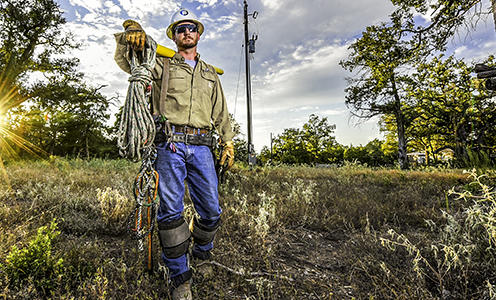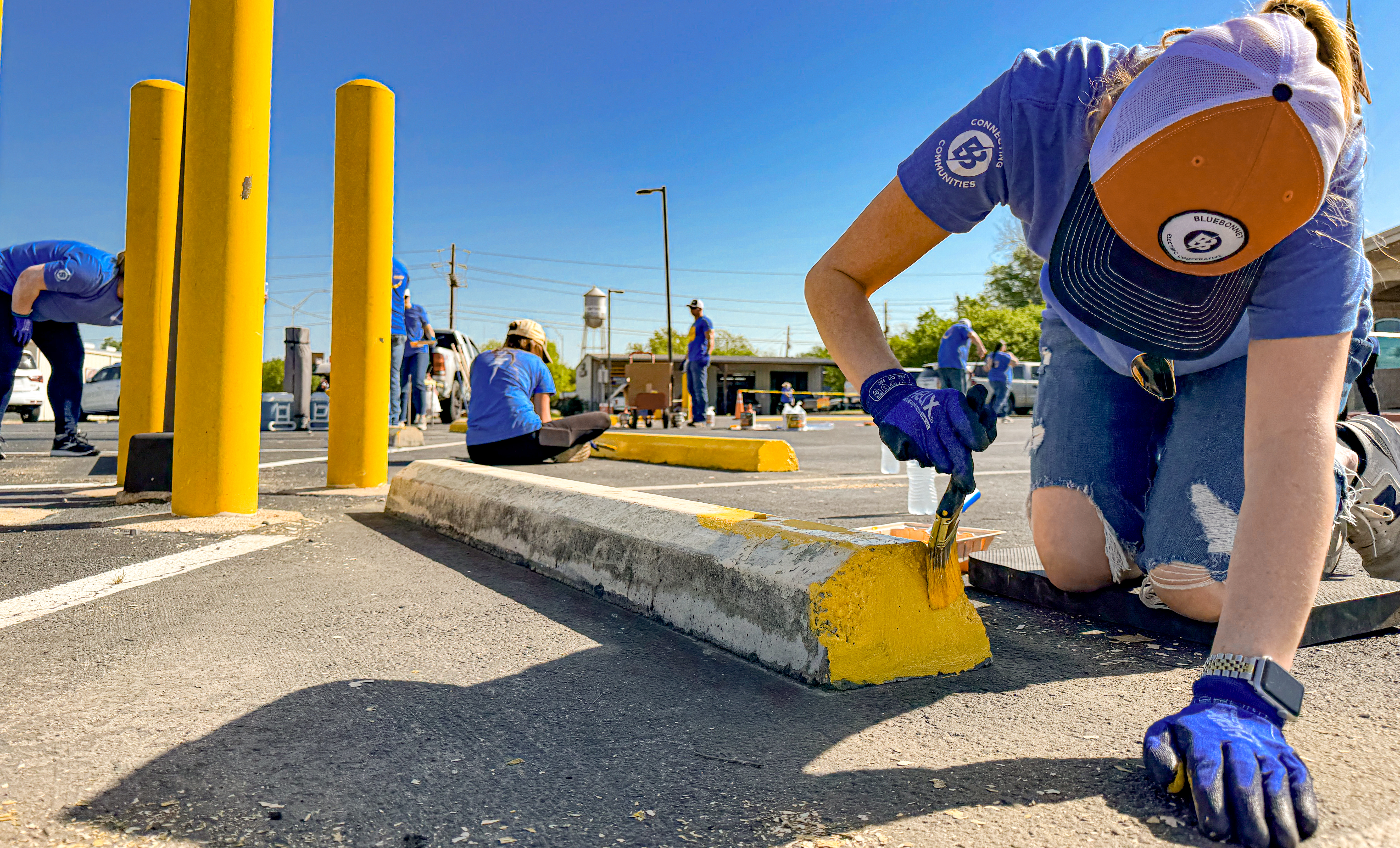The cooperative way
Recent news
By Denise Gamino
Sometimes, even a chicken coop can be a cradle of history. In 1897, Calvin and Lucia Rhone bought 100 acres in Fayette County. They brought their love letters, financial papers and family photos. They brought their five children and then had four more (another three died at birth). All 12 births were recorded by hand in the big, ornate family Bible.
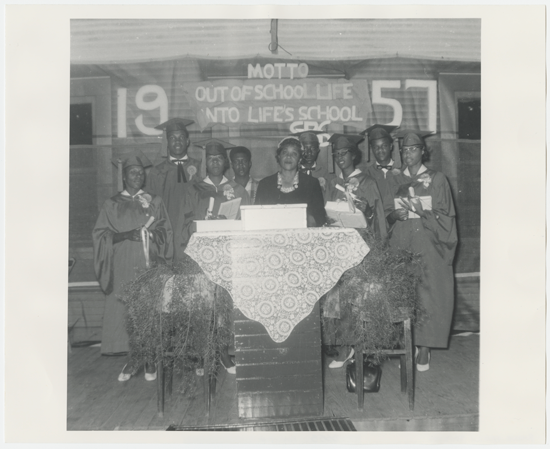
The Rhones bought 103 more acres in 1917, all within what is now the Bluebonnet Electric Cooperative service area. The family raised turkeys and grew cotton on their 203-acre farm. They also cultivated history.
This respected African-American family, standouts in Round Top as teachers and farmers, preserved scores of personal artifacts that today tell a story of post-Civil War segregation, black perseverance and education, racial integration, family love and the minutiae of everyday life, starting more than a century ago. Treasures include letters from the 1800s, photos of African-Americans and educational records.
The relics were found withering in a chicken coop before being collected by the University of Texas at Austin’s history center, now known as the Dolph Briscoe Center for American History.
The artifacts, called the Rhone family papers, are just the type of household heirlooms that help preserve black history in America. Specifically, they capture some of the character and dynamics of an admired, multigenerational family of middle-class African- Americans in rural Texas.
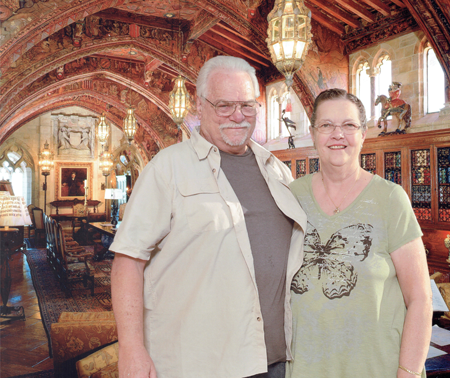
UT acquired the Rhone family papers in the 1980s, but the surprising story of how they were found and preserved has never been fully chronicled. It involves an airline pilot in Florida who wanted some farmland and his wife, a flight attendant and fifth generation Texan, who wanted to raise their family in the Lone Star State. It involves the Rhone family homestead, found plundered and abandoned outside Round Top. And a dedicated UT archivist who walked into the former Rhone homestead chicken coop, picked up every photo and piece of paper she could find and drove them to her Austin garage in a Volkswagen van.
A UT memo calls the collection “an extraordinarily rich source of information” for studying African-Americans in Texas, “particularly since the collection covers nearly 100 years, with substantial correspondence existing for each decade between 1880 and 1970 (and) numerous excellent photographs.”
“African-American multigenerational collections are not that common,” said Kate Adams, a recently retired UT archivist and curator who retrieved the Rhone collection from Round Top. “There was never any question that we would want this.”
In 1983, Adams was assistant director of UT’s Eugene C. Barker Texas History Center (now part of the Briscoe Center) when she heard about the Rhone keepsakes from a historian at the Texas State Historical Association. A family who bought 50 acres of the deserted Rhone homestead in 1977 wanted to donate the photos and papers.
The donors, Rich and Linda Colby, had found the dilapidated, 800-square-foot Rhone house in disarray when they came from Fort Lauderdale, Florida, to look at real estate in Round Top.
“It looked like somebody had ransacked the whole house looking for valuables and just let it lay,” Linda Colby said. “The furniture was gone, but the papers and things were just there — books, stacks of papers, stacks of magazines like Ebony and things. All kinds of stuff.”
By that time, the last Rhone family member to live in the home had died.
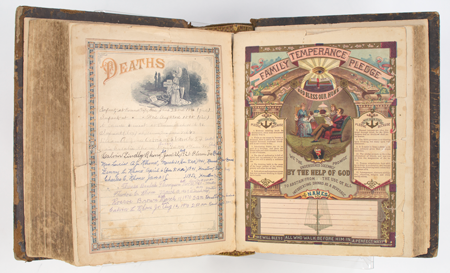
Rich Colby was busy flying for National Airlines out of Miami. Linda Colby, who had been a flight attendant, was a stay-at-home mother and expecting a child. Before the Colbys moved from Florida to the former Rhone farm, Linda Colby’s parents, the late J.F. and Bonnie Knox of Houston, drove on weekends to Round Top to clean the old house.
Bonnie Knox was entranced by the Rhone family’s memorabilia and urged her daughter to save it. “My dad would be cleaning in one room and then he’d go into another room and see my mother reading another letter,” Linda Colby said. “He said, ‘We don’t have all day, Bonnie.’ But thank goodness she had that love of history and preserving things.
“My mother thought there was value to this,” Linda Colby said. “She put it aside. I was not the historian; my mother was.”
Linda Colby’s parents packed the Rhone family papers and photos in boxes and bags. Then, when the Colbys moved in, Rich Colby transferred the collection to the best storage shed on the property: a large, empty, walk-in chicken coop. The collection remained in the coop for several years until the Colbys got to know then-UT professor Jim Ayres, founder of UT Austin’s popular Shakespeare at Winedale program near Round Top. Ayres suggested the Rhone family papers be donated to UT’s history center.
“I just knew it had to do something more than sit in the chicken coop,” Linda Colby said. “I never had the time to go through it.”
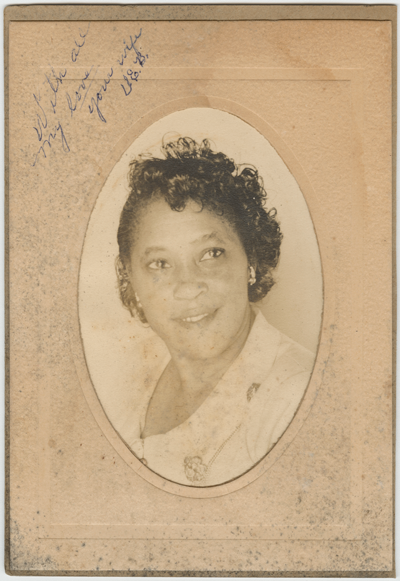
The bulk of the Rhone family papers had been collected and preserved by Urissa Rhone Brown, one of Calvin and Lucia Rhone’s daughters who died in 1973. Brown earned bachelor’s and master’s degrees from Prairie View A&M and spent a long career as a teacher in segregated schools in various Texas towns from the 1930s through the 1960s. She transitioned to the Round Top-Carmine school district when classrooms were integrated in 1966. She served as principal of the elementary, junior high and high schools.
Urissa Rhone Brown and her husband, Roscoe, lived in the Rhone family homestead after her parents died. “She was just such a well-thought-of teacher in this (Round Top) area,” Linda Colby said.
She also was the family historian. Urissa Rhone Brown safeguarded the old family photos and documents as well as thousands of her own school archives and personal papers. And just like her mother had, she saved love letters from her husband.
“She kept everything,” Linda Colby said. “I knew they had to go to be restored and kept for future generations. It was her life’s investment.”
Urissa Rhone Brown’s historical foresight is significant and a model for others, said Michael Hurd, director of the Texas Institute for the Preservation of History and Culture at Prairie View A&M University. It “speaks to the family’s understanding back then of the importance of preservation — telling their story. So many objects of our personal and family histories are summarily tossed, disregarded. However, there’s an increasing awareness about African-American genealogy and the need to tell our stories. And preservation is the linchpin for that.”
That awareness is often heightened during February, which is designated as Black History Month.
Before the Rhone family papers could be processed and archived, UT had to fumigate them twice to protect the collection from mold after being in the chicken coop.
In addition to the papers and photos, the collection includes cotton sacks cut into fabric for dresses, several
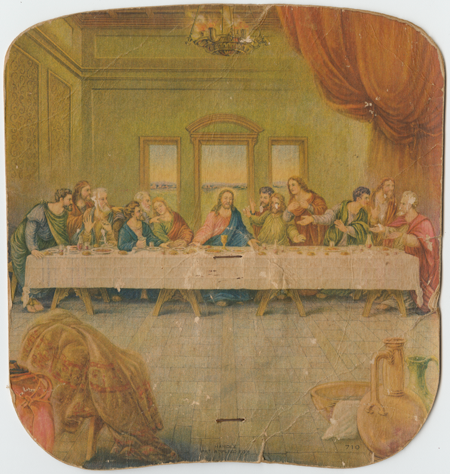
colorful church fans with illustrations of Jesus, a calfskin wallet and a powder puff that still contains traces of powder.
The family also kept an 1857 book about the immorality of slavery: “God Against Slavery: And the Freedom and Duty of the Pulpit to Rebuke It, as a Sin Against God,” by abolitionist clergyman George B. Cheever of New York.
Preserved poll tax receipts show that Rhone family members believed their votes were important. The Rhones also were active members of the Concord Missionary Baptist Church in Round Top, founded by African-Americans in Round Top in 1867 and still active today. Calvin and Lucia Rhone also belonged to several African- American chapters of fraternal societies such as the Order of Knights of Pythias, Sisters of the Mysterious Ten and the Grand Court Order of Calanthe, organized in Houston in 1897 to provide burial insurance for blacks.
And six of the Rhone children attended Prairie View and became teachers, UT records show.
Urissa Rhone Brown owned a 1924 Model T and paid $11.25 on Jan. 24, 1925, for state license fees, according to the old receipt. She earned a bachelor’s degree in 1947 and a master’s degree in 1955, according to Prairie View A&M University records. Her master’s thesis focused on Round Top High School’s graduation and drop out rates. She concluded that guidance services, classes and student extracurricular activities needed to be improved.
One class paper she wrote as a graduate student in 1950 examined racial inequities: “To my way of thinking, there (are) no essential mental differences in races.” She called racial inferiority a scar “usually caused by shock, disappointment and humiliation.” She argued that a person should be advised that “the color of his skin and/or the texture of his hair does not necessitate his being inferior.”
She wrote those words five years before Rosa Parks refused to give up her bus seat to a white person in Montgomery, Alabama.
“There are still so many stories and aspects of African-American history that need to be revealed, and the Rhone family papers are excellent examples of that,” said Hurd, the Prairie View historian whose institute was created by the Texas Legislature to collect and preserve African-American history and culture in Texas.
“Regardless of where the artifacts were found, so much of them speaks to the family’s understanding back then of the importance of preservation — telling their story.”
THE THINGS THEY SAVED
The Rhone family papers fill 15 archival boxes. Items include:
- Calvin Rhone’s 1903 Fayette County teacher’s certificate for “the colored schools for children.”
- A 1923 receipt for a $1.75 poll tax that Lucia Rhone had to pay for the privilege of voting, just three years after the 19th Amendment to the U.S. Constitution granted American women the right to vote. More annual poll tax receipts are dated through the 1950s before the U.S. Supreme Court ruled that poll taxes were unconstitutional.
- Grocery store receipts showing the family liked vegetables and ham and that someone smoked Camels.
- Motor vehicle fee receipts for their 1924 Ford Model T, license plate 277-525.
- Essays written for classes at what is now Prairie View A&M University, the historically black college 50 miles east of Round Top. One essay about perceived racial superiority states that “there (are) no essential mental differences in races.”
- More than 100 photos, including old tintype studio portraits of unidentified people presumed to be relatives or friends.
THE LOVE STORY OF CALVIN AND LUCIA RHONE
By Denise Gamino
Love can live forever on paper.
“One thought of your sweet smile cheer(s) me in my lonely hours. I get up and imagine you at my side and your bright eyes smiling in mine, and your sweetest voice of all voices ring continually in my ear,” wrote Calvin Rhone to Lucia Knotts in 1887 before their marriage. “I will be true to you until time shall be no more.”
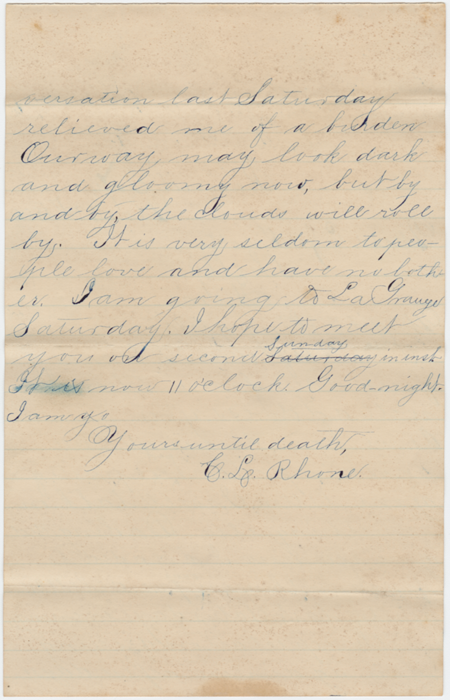
The tenderness and devotion of the young couple began in the 1880s and lasts to this day, because their 130-year-old letters are preserved at the University of Texas at Austin’s Dolph Briscoe Center for American History. Their love story is valued for its details about middle-class African-American life in rural Texas in the decades after the Civil War.
Calvin Rhone and Lucia Knotts married in Round Top in Fayette County on Dec. 27, 1887, and had 12 children (three died at birth). Their 19-month courtship included 37 letters that outlive them. The handwritten letters make little mention of public events, concentrating instead on their relationship. They debated whether Lucia should continue her education at Prairie View State Normal School (today’s Prairie View A&M University) after marriage. She wanted to. He was opposed.
That courtship tension over gender roles was featured in a 1996 scholarly article in Southwestern Historical Quarterly: “The Courtship Letters of an African American Couple: Race, Gender, Class, and the Cult of True Womanhood.”
“By resisting Lucia’s wish to continue her teacher training after marriage, Calvin reflected the values of the dominant white culture,” states the article written by Vicki Howard when she was a graduate student at UT-Austin earning a Ph.D. She now is a visiting fellow at the University of Essex in England.
“At a time when work and marriage were considered incompatible for women, Lucia’s wish to continue her teacher training, and by implication to teach after marriage, was at least contrary to prevailing white middleclass standards,” the article states.
Lucia won out. Both she and Calvin were highly regarded schoolteachers in Round Top, where Calvin was called Professor Rhone.
Six of their children attended Prairie View, including Urissa Rhone Brown, who earned a master’s degree in education there. Urissa’s long teaching career in segregated schools was capped by her role as a much-admired principal in the integrated Round Top-Carmine school district.
Wisdom was her calling. It was she who kept her parent’s love letters for the ages.
This story originally appeared in Bluebonnet's pages of February's 2017 issue of Texas Co-op Power magazine. Download this story
Bluebonnet is celebrating 85 years of service. Join us as we honor our past and plan for the future.
Since 1939, Bluebonnet has provided safe, reliable and affordable electric service to its fast-growing membership. Throughout the year, join us in celebrating this milestone as we honor our past and plan for the future.
For 85 years, Bluebonnet Electric Cooperative has provided power to members and communities in Central Texas. Bluebonnet originally served 1,468 members through 646 miles of power line. Today, the cooperative powers more than 133,000 meters with nearly 13,000 miles of line. In those early years, Bluebonnet’s dedicated men and women were passionate about making members’ lives better. That work ethic and commitment to the cooperative’s communities has never wavered.
Time has brought remarkable changes to Bluebonnet’s region. Populations have boomed and economies diversified. Many members carry on the tradition of farming and ranching, some following in the footsteps of previous generations, others for the first time. Communities once anchored by agriculture, or the oil and gas industry, now are home to a diverse mix of retail, commercial and industrial businesses.
Today, Bluebonnet is stronger, faster, more efficient and more reliable than ever. It has kept pace with growth using new technology and tools to improve and expand its electric system and service. Members can pay bills and monitor their electric use through the cooperative’s website or mobile app at any time. Technology allows Bluebonnet’s control center operators and lineworkers to identify outages and restore power quickly and safely. Member service representatives can rapidly answer questions and resolve concerns, in person or by phone. Safe, reliable, affordable electricity and excellent service are as important to Bluebonnet employees today as they were in August 1939. Members can trust that the cooperative will continue to uphold those commitments. It is the best way Bluebonnet can honor the legacy of its members, its workers and the communities it serves.
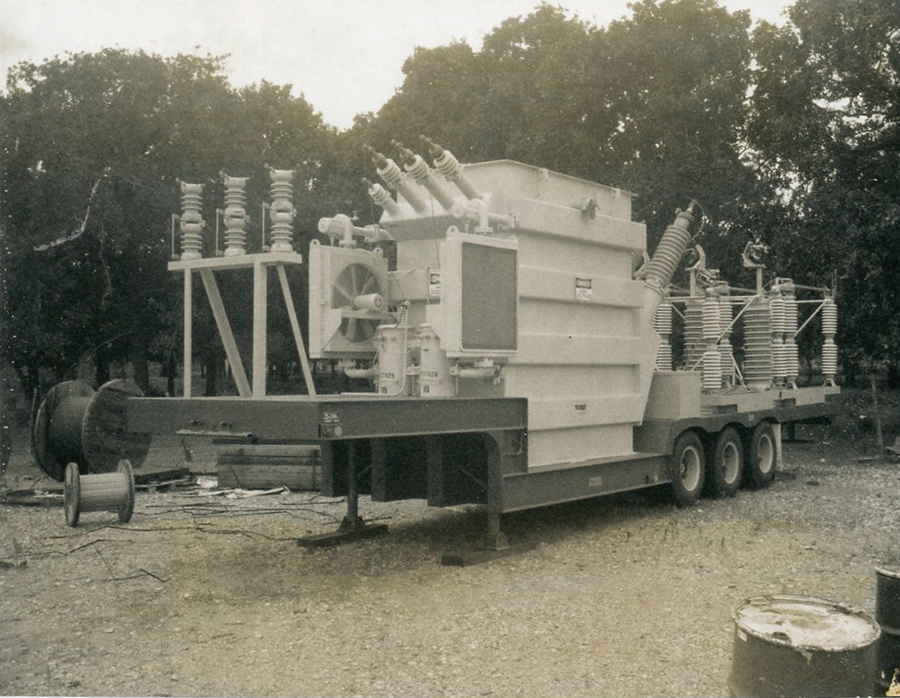

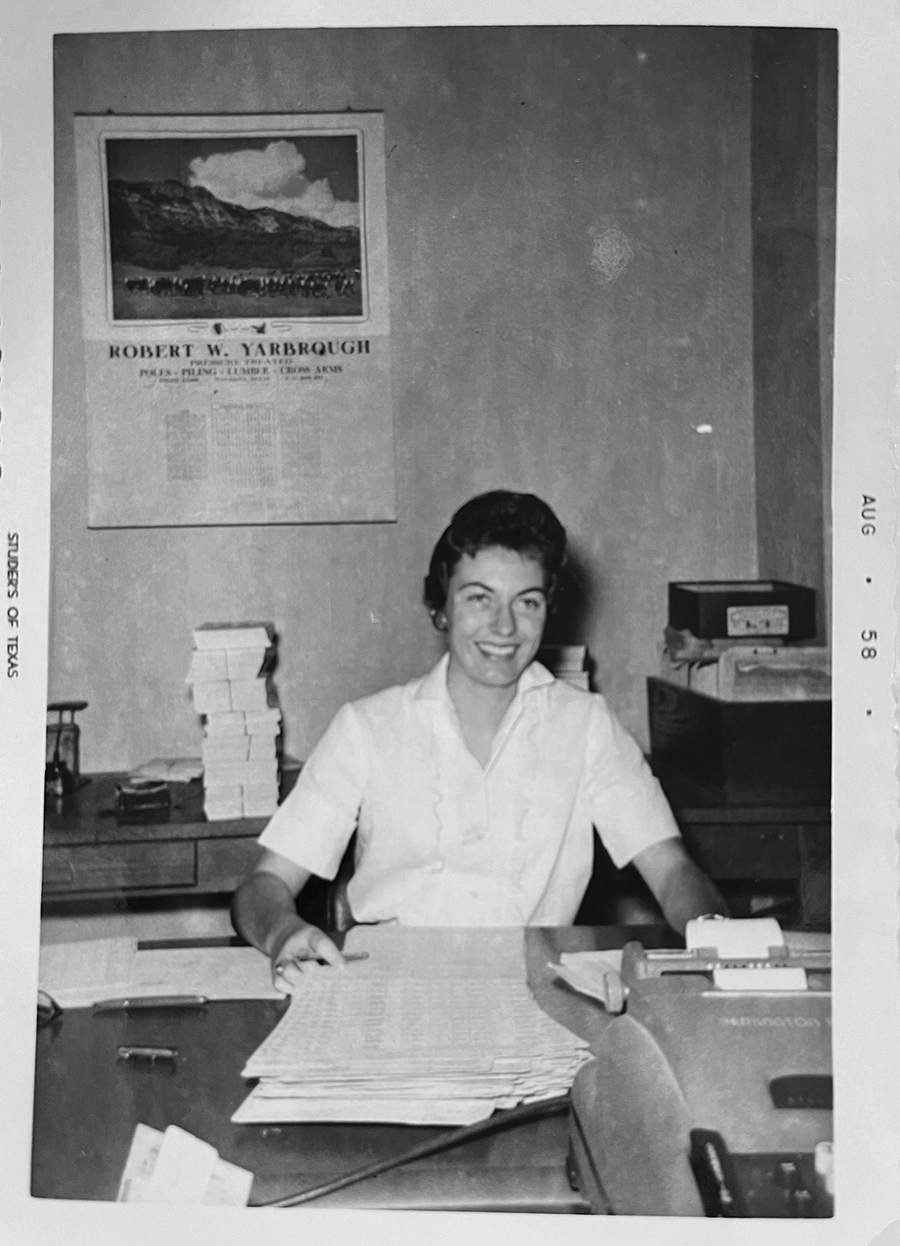

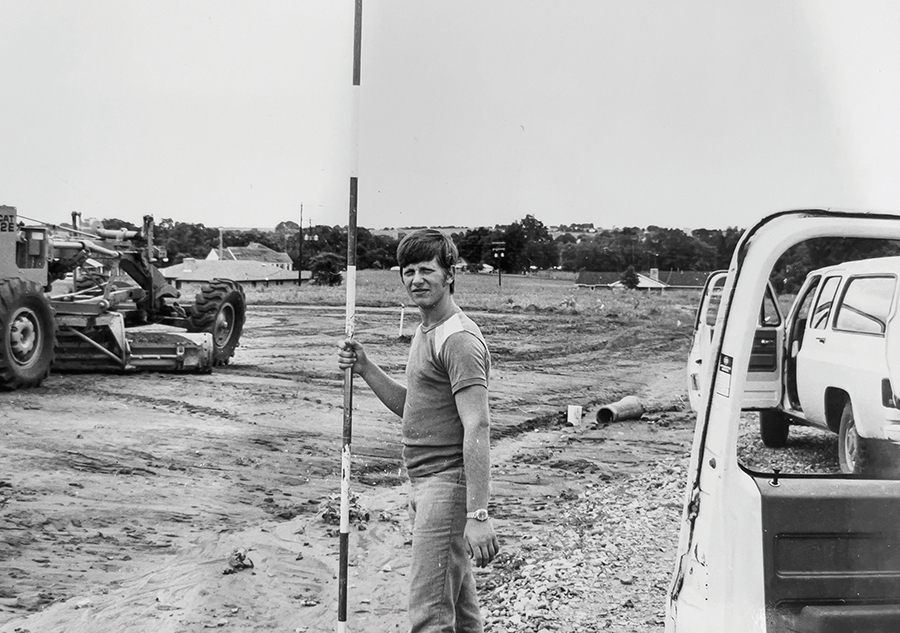
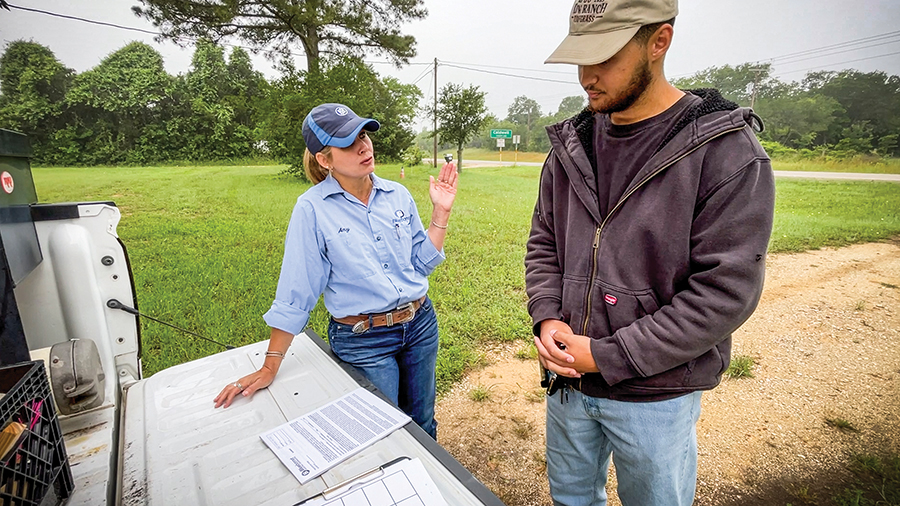
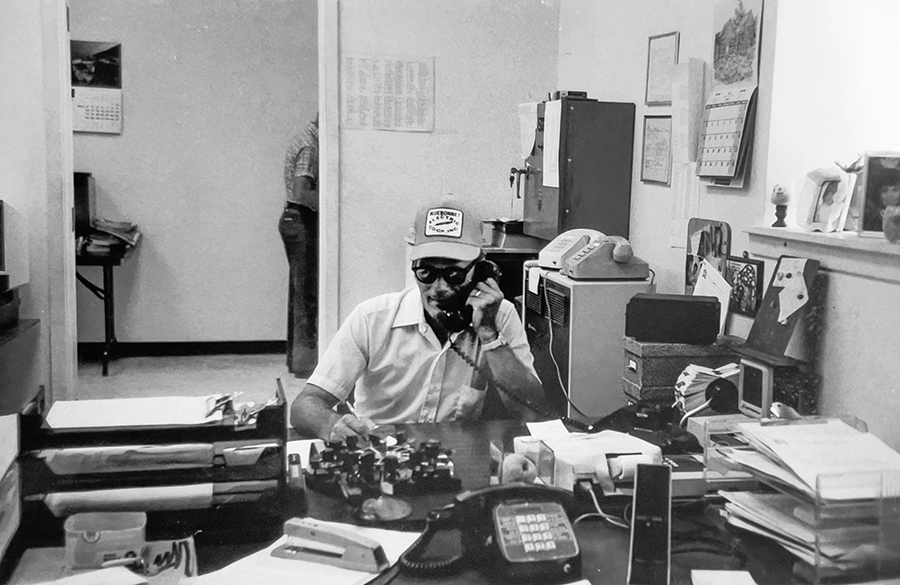

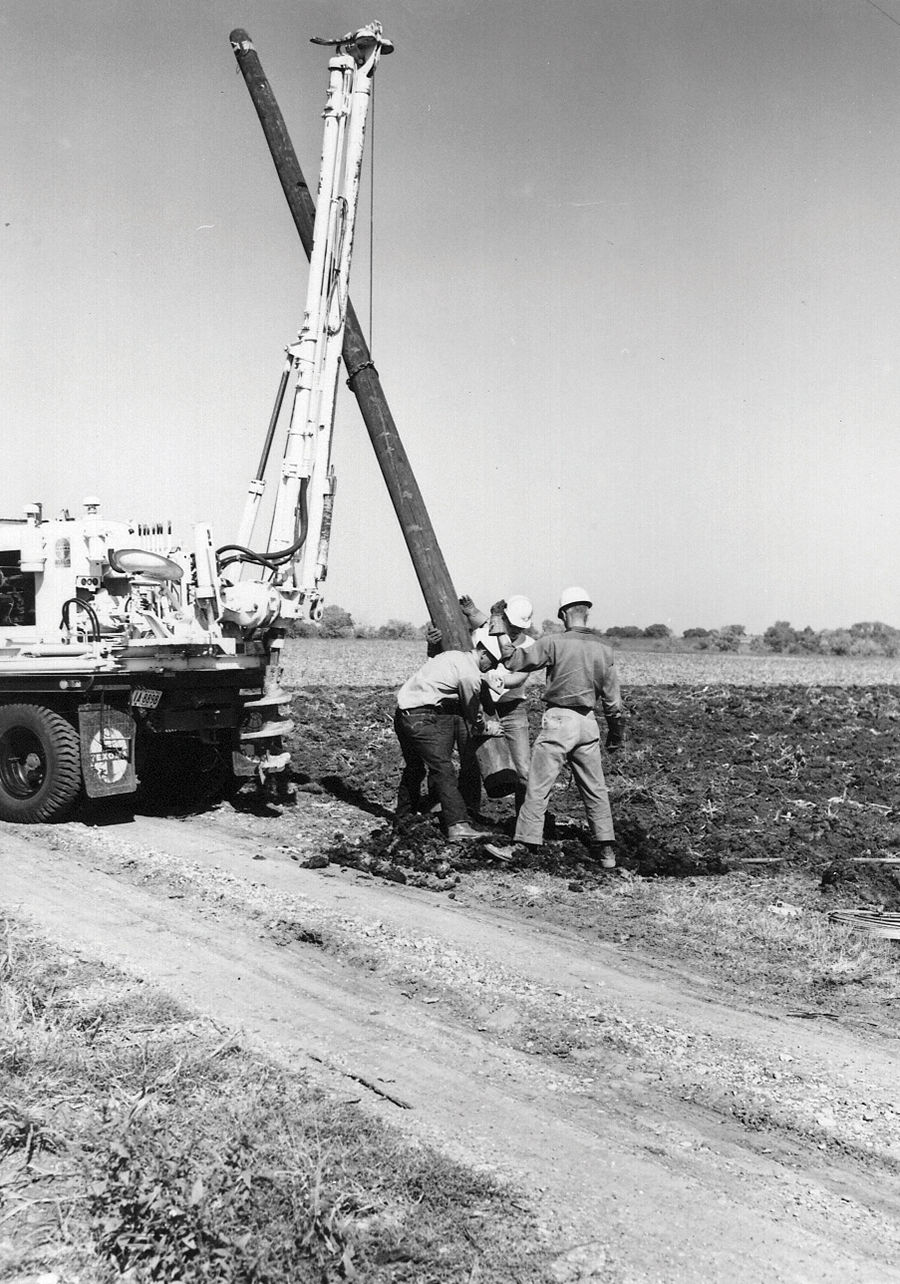
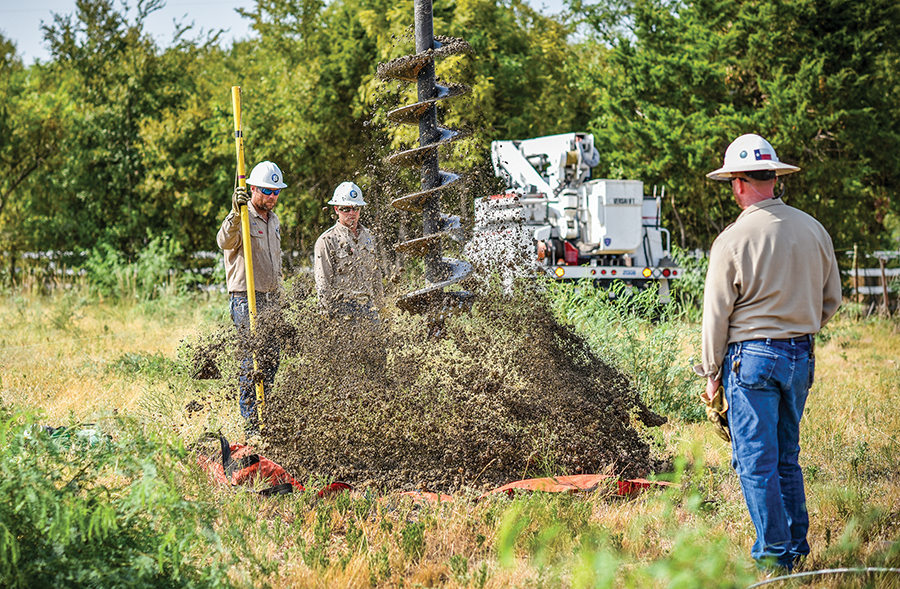
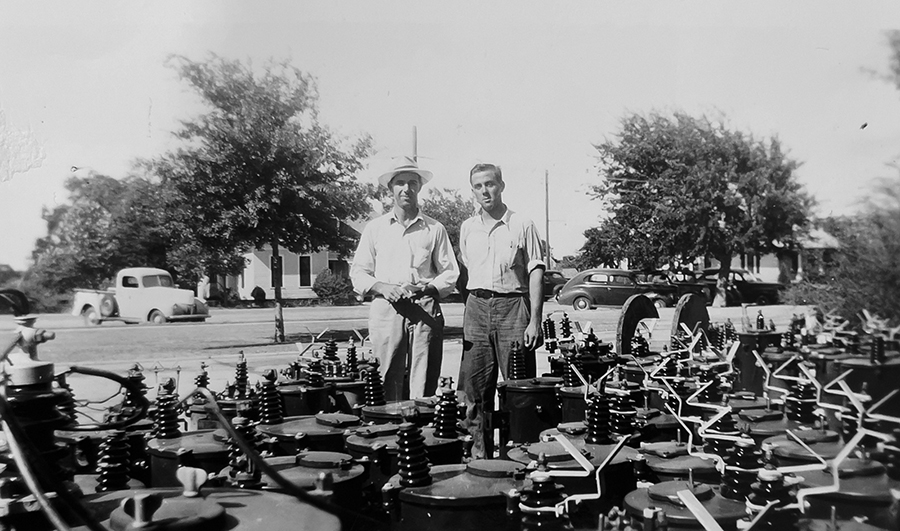

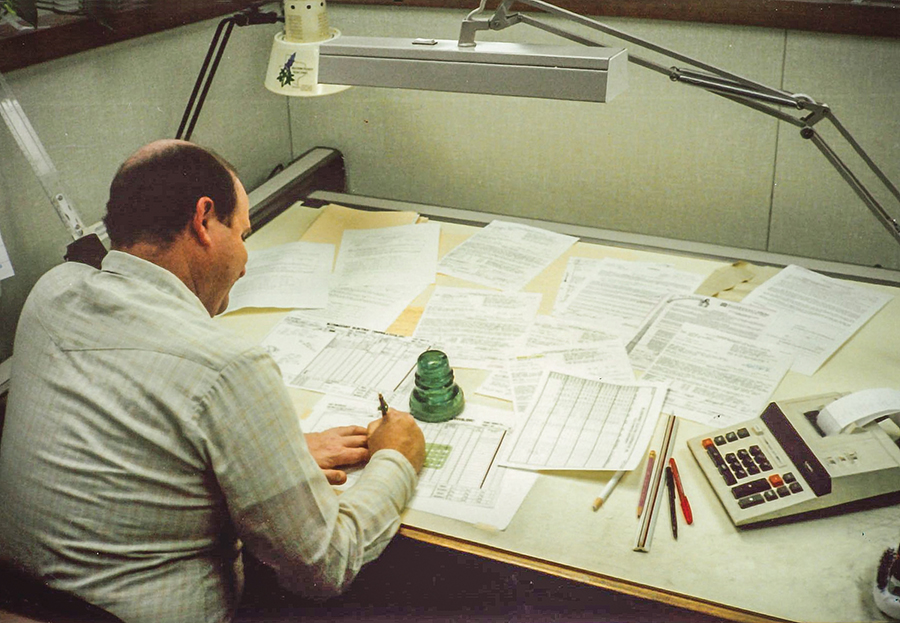
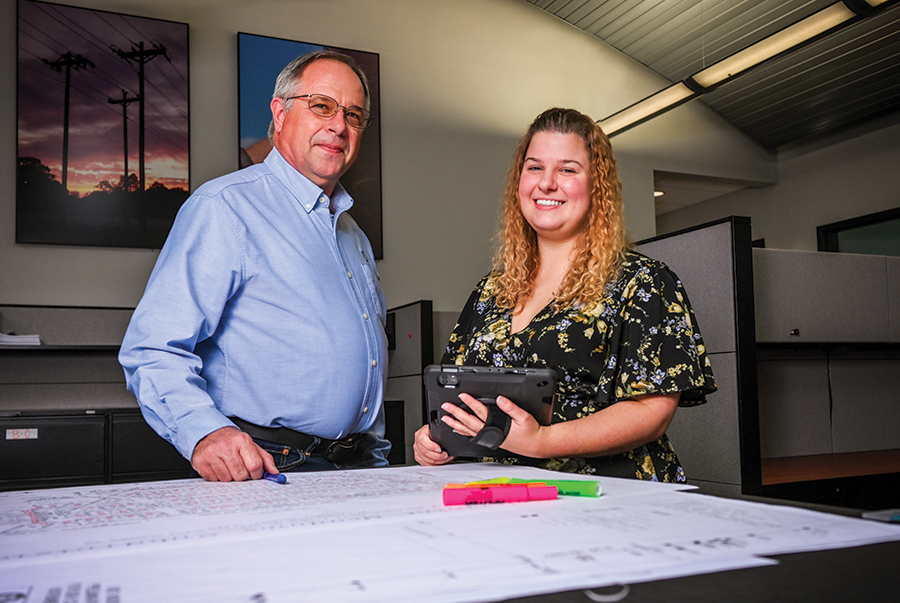
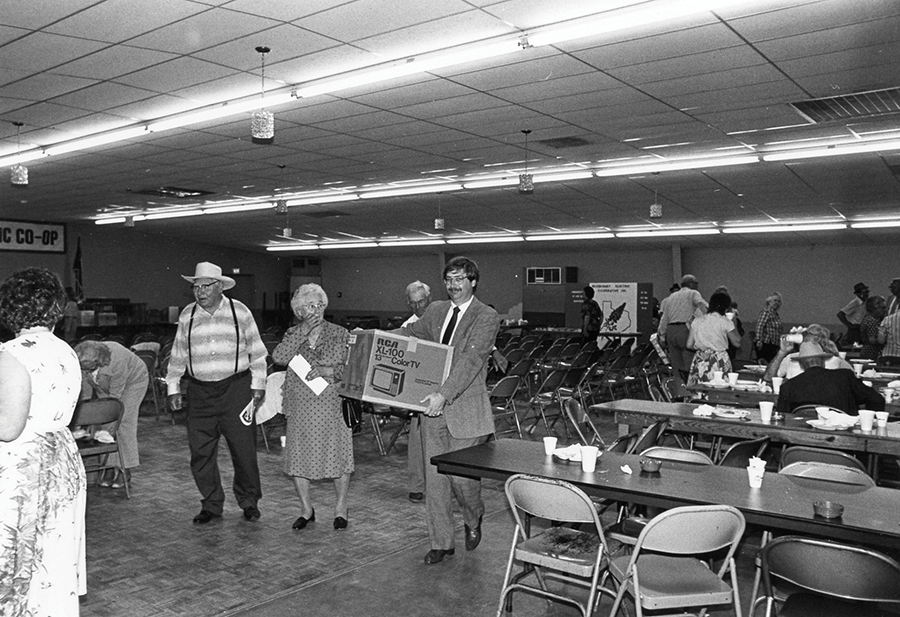
carries a 13-inch RCA color TV to the vehicle of Emma Canik, a co-op member from Giddings.
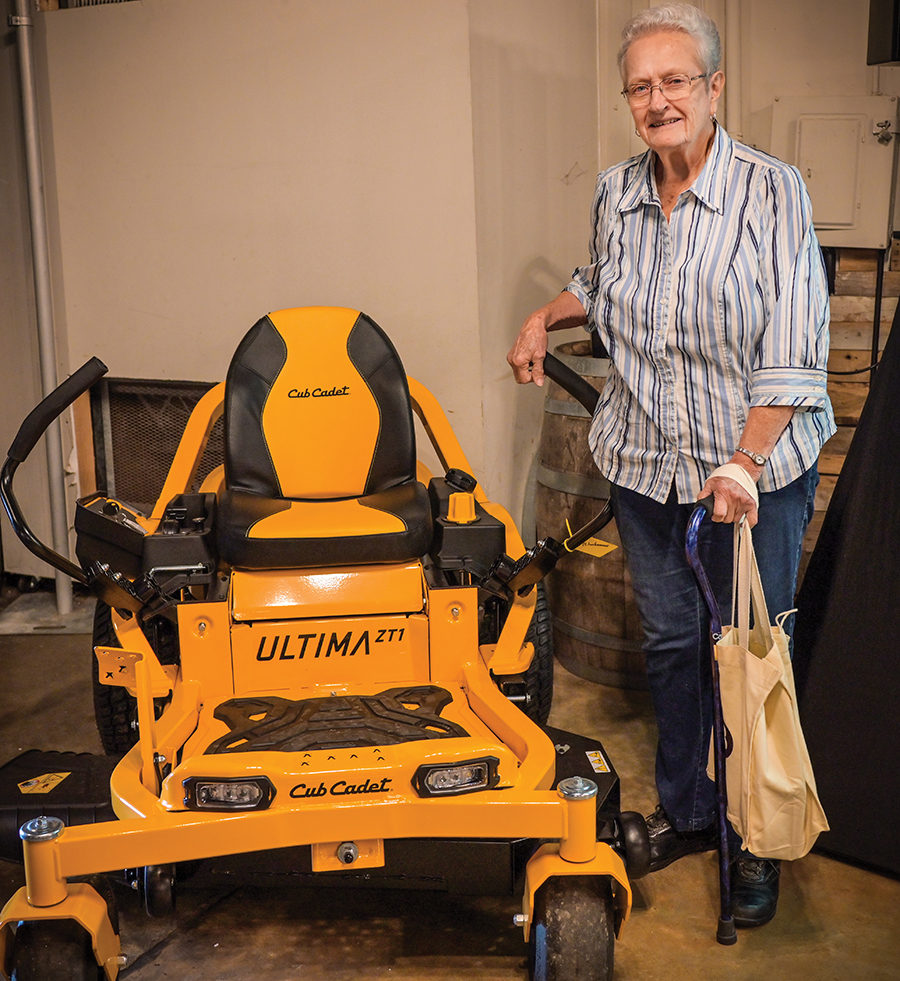
Drews says she has attended 21 Annual Meetings and this was the first time she won a prize.


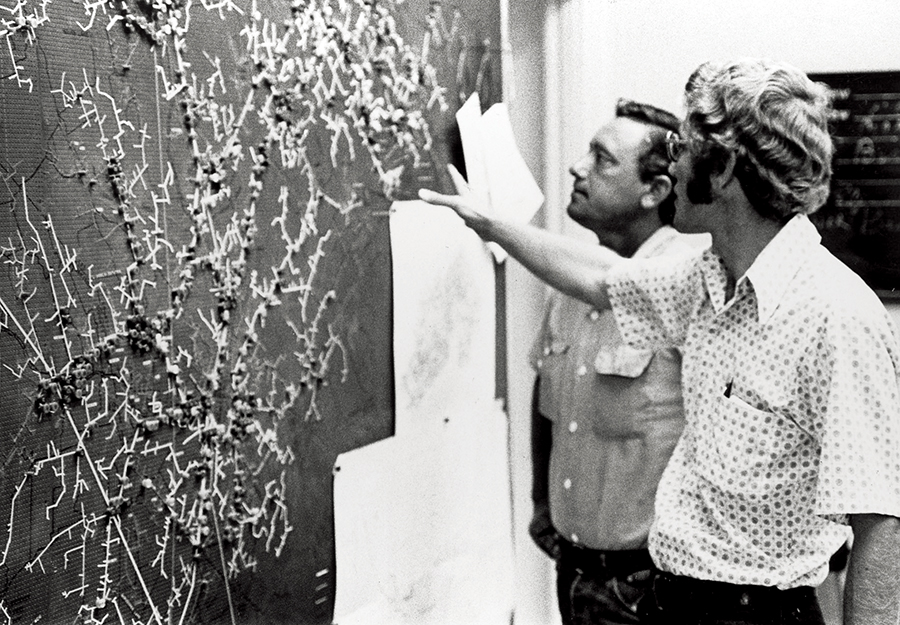

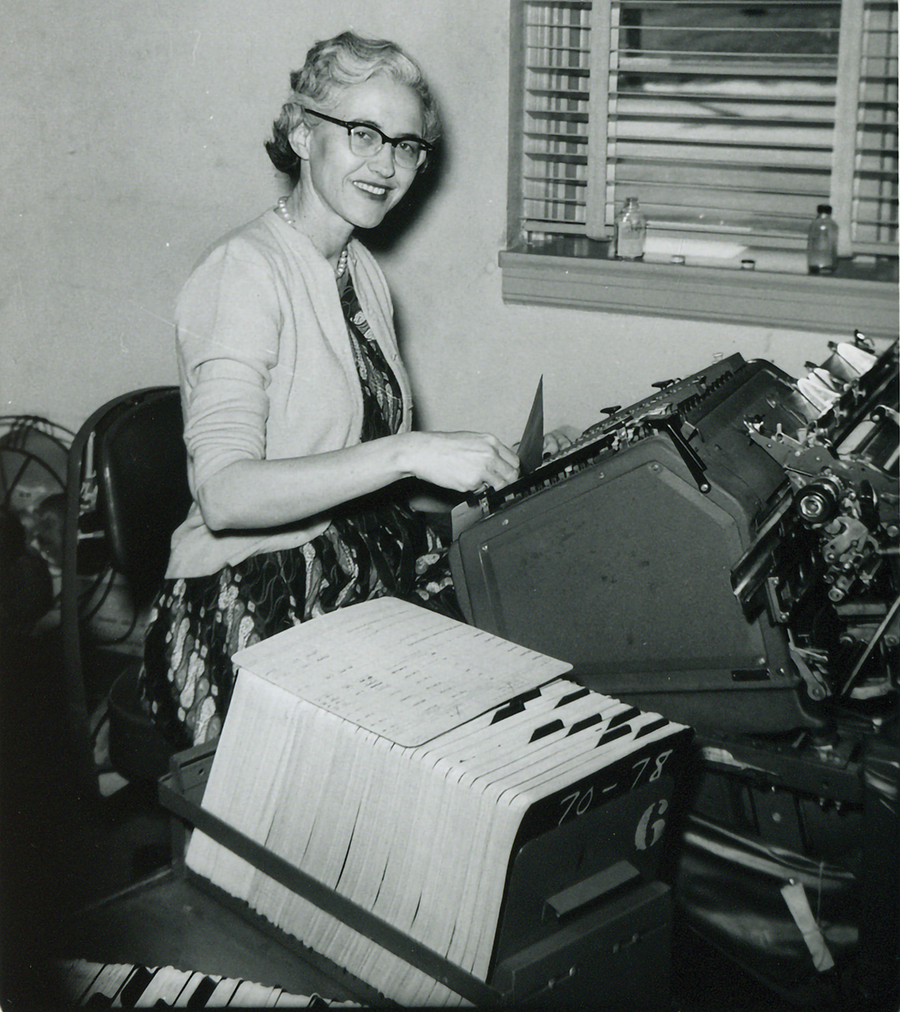

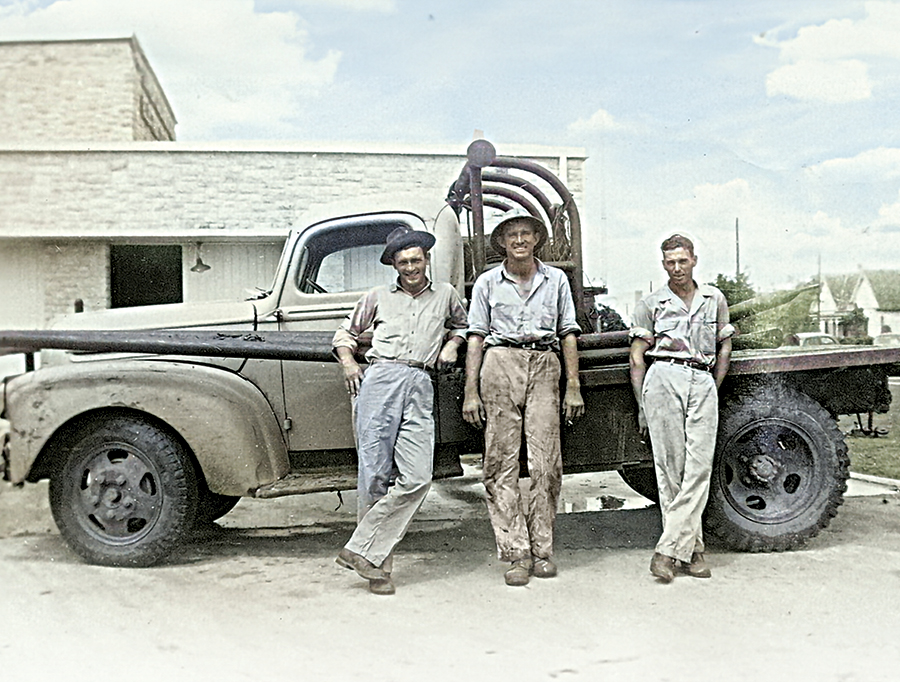

Two graduates began their co-op careers as interns; four additional staff members receive advanced technical training certifications
By Sidni Carruthers
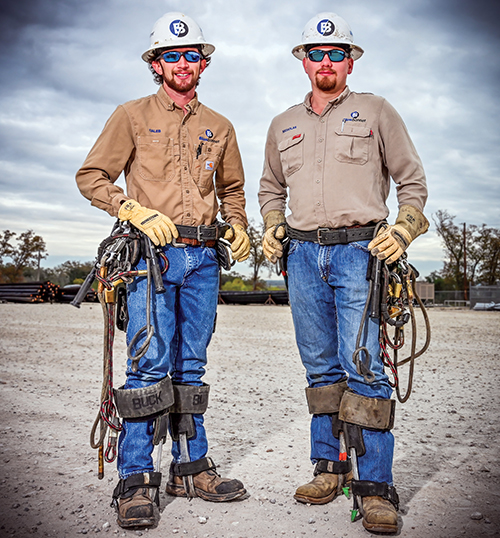
Fifteen apprentice lineworker graduates at Bluebonnet Electric Cooperative are ready to join dozens of other journeyman lineworkers who keep electricity flowing to co-op members across its 3,800-square-mile service area.
Of the 15, two began as lineworker interns at Bluebonnet in 2019, completing a six-month training program before beginning years of apprentice training.
Another four Bluebonnet employees recently completed specialized training programs: one in advanced electric meter work, one in substation operations and two in control center operations.
Each program has different study, testing, training and work requirements. The lineworker apprentice program at Bluebonnet requires 8,000 hours of on-the-job learning, which includes 672 hours of technical instruction — typically a four-year commitment. The recent apprentice graduates have obtained U.S. Department of Labor certification as lineworkers.
“I grew up in the Brenham area with Bluebonnet folks all around. When the apprenticeship opened up and I had an opportunity to work here, I took the chance,” said Brenham-based journeyman Ryan Quinton, one of the 15 graduates. “There is always something to learn out here, but I have a good crew that makes sure we are safe and can serve Bluebonnet’s members.”
He added that the best parts of his job are being able to work outside and do something meaningful.
Many of the apprentice graduates brought knowledge and skills from previous training and other jobs.
“Before coming to work at Bluebonnet, I worked as a heavy-machine operator,” said Matt Mole, now a Bluebonnet journeyman working in Maxwell. “That time taught me the importance of safety, paying attention to what is happening around you and the importance of teamwork. The best part about working at Bluebonnet is the camaraderie that I feel with everyone.”
Including this year’s group, 139 Bluebonnet lineworker apprentices have graduated from the program since it began in 2004.
During their hundreds of hours of classroom instruction and thousands of hours of on-the-job training, apprentices focus on learning how to build overhead and underground power lines, restore power, repair and replace equipment and connect meters.
Garrett Gutierrez, field superintendent in Bastrop, is proud of the program and the quality of service it allows Bluebonnet to provide.
“Most of the guys who go through our program are from around the Bluebonnet service area and are Bluebonnet members, too,” Gutierrez said. “They take pride in their work, and that shows when they are working. It is great to see them be able to work in their communities.”
The most recent Bluebonnet apprentice graduates, in addition to Quinton and Mole, are Nick Baker, Joseph Carrillo, Caleb Clay, James Holder, Casey Jacobs, Matt Jones, Stephen LeFrance, Parker Redwine, Bubba Townsend, Garett Urban, Rhett Vellier, Bryan Woods and John Zamora. Clay and Baker, both from Bastrop, began their Bluebonnet careers as lineworker interns in 2019.
The intern program, which started in 2018, provides six months of technical instruction in line work. To advance into the apprentice program, participants must also obtain a power-pole climbing certification and a commercial driver’s license.
“I was interested in the internship program because I knew Bluebonnet was a great place to work, and there is always a need for lineworkers,” said Baker, who began the program after graduating from Bastrop High School. “Plus I already knew a few guys that were in the apprenticeship program. Having started as an intern and seeing what all it took to be a lineman at Bluebonnet really solidified that this is what I wanted to do.”
The internship program aims to hire candidates who live in the Bluebonnet region.
“We concentrate a lot on safety with these young guys,” said Nick Barta, Bluebonnet safety and training supervisor. “Throughout the cooperative we focus on safety, but it is essential that when the interns start, they understand the importance of safety and how to think about it in all of their work.”

Janca and John Russell.
Four Bluebonnet employees also received certifications for specialized work.
Anthony Garcia, a power quality and metering technician, received training in troubleshooting meter problems and formulas for reading meters. John Russell, a substation technician, completed an apprenticeship to learn skills required to maintain and repair substation equipment. Two control center operators, Bryn Janca and Hunter Adamek, completed a 10-month program and proficiency exam to receive control center operator certifications.
Learn more about Bluebonnet’s intern and apprenticeship programs at the cooperative, at bluebonnet.coop/careers.

